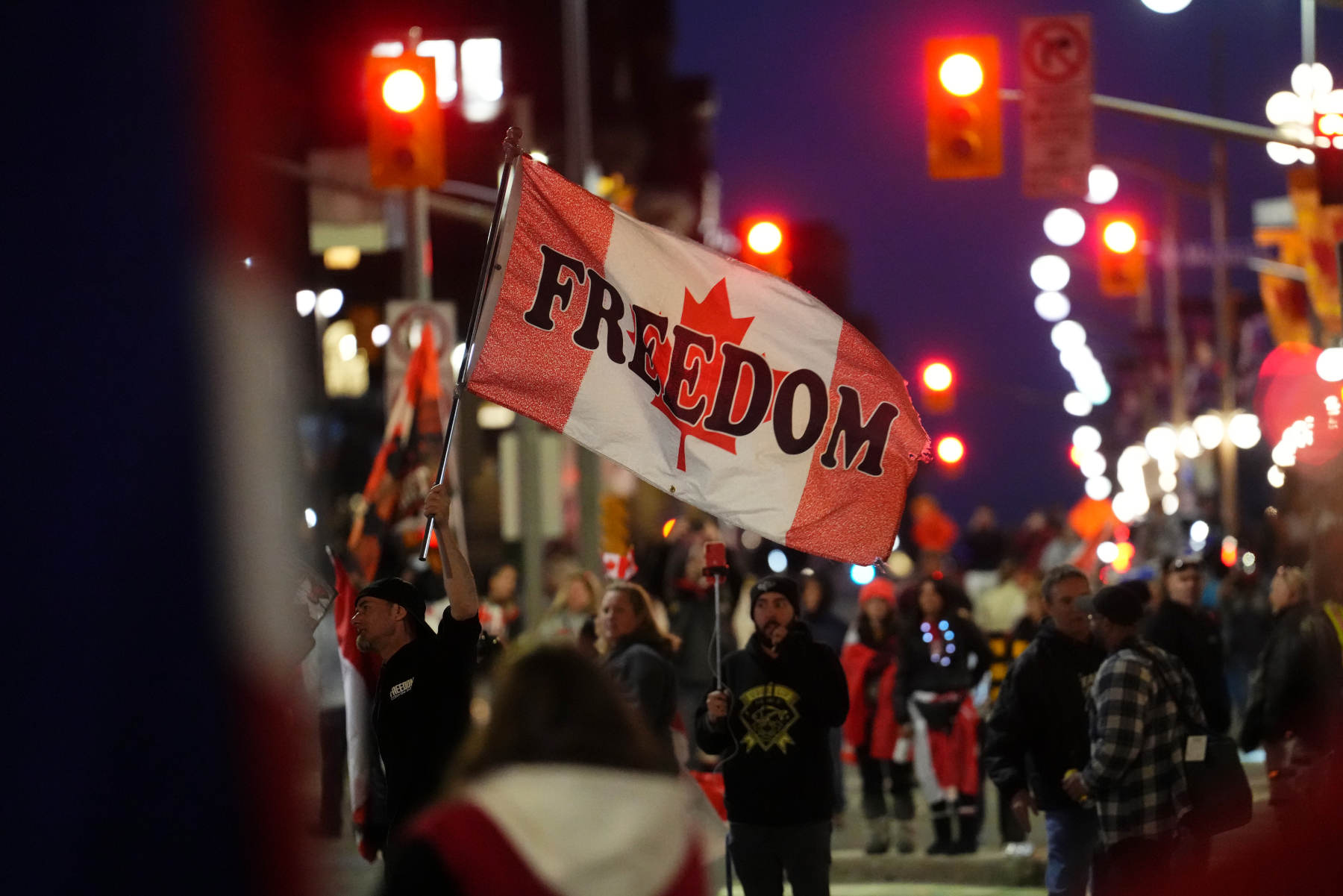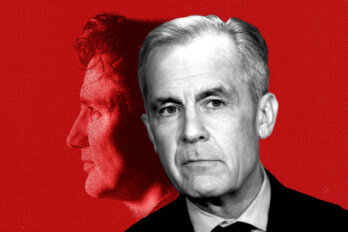During the fall of 2022, the Public Order Emergency Commission looked into the federal government’s handling of the Freedom Convoy protests earlier that year. It heard multiple witnesses, including police and intelligence service personnel, Freedom Convoy organizers, Ottawa residents, and city officials. The narrative unfolding before Justice Paul Rouleau betrayed a gross lack of preparation by the Ottawa Police Service. It also revealed the ineffectiveness of communication channels between intelligence brokers at the Canadian Security Intelligence Service, the Royal Canadian Mounted Police, the Privy Council Office, the Ontario Provincial Police, and the Ottawa Police Service. To put it simply, the threat represented by the protest had been severely underestimated.
Such hearings are required whenever the government activates the temporary additional powers afforded by the Emergencies Act. The hearings are meant to ascertain the legitimacy of the government’s decision as well as the way it was implemented by various agencies. It is telling that the act, like the 1914 War Measures Act, which it replaced in 1988, has been invoked only once in peacetime. The original act was used to respond to the Front de libération du Québec—FLQ—crisis in October 1970 and caused a historically momentous scandal. Its replacement has been invoked only once, and that was in February 2022, during the Freedom Convoy occupation, combined with border crossing blockades in Coutts (Alberta) and Windsor.
The FLQ crisis and the Freedom Convoy occupation have almost nothing in common other than the government’s call for emergency powers. Yet a few important teachings can be derived from a comparison between the two events. The two crises were significant, both in terms of objective public safety and for the maintenance of Canadians’ confidence in their state institutions. The FLQ had kidnapped a British diplomat and the deputy premier of Quebec, eventually killing the latter. The Freedom Convoy arrived not only with trucks but with an army of sympathizers, colonized by cliques of various far-right anti-government extremist groups, with money and with plans to stay until their demands were met, and with no alternative path to resolution. Constant minor clashes and harassment caused the exasperation of residents and created a highly volatile context with a high potential for violence.
Though of a different nature, implications, and legal definitions, both situations were quite serious. Yet it could easily be argued that the response was disproportionate, born out of surprise, misreading the situation, and an utter lack of preparedness. Neither crisis threatened public order, welfare, or the safety of the state. Better planning and basic prevention (for instance, diverting trucks away from the Ottawa city core in 2022; giving the deputy premier a bodyguard after multiple explicit threats had been made against politicians in 1970) would have averted the administrative panic response.
After the dust settled, it became obvious that, in both cases, declaring a state of emergency was of little help in solving the immediate problem, and it seems unlikely to have prevented a repeat: quite the opposite, in fact, since the forceful removal of trucks and protesters allowed them to save face and to reinforce their “state oppression” discourse.
There is particular context for this. These massive events are ideal sites for mainstreaming extreme ideas; for fostering distrust and hatred against governmental institutions, the media, and politicians; for recruiting new followers; for financing; and for networking in person or through technological mobilization. Such events are supercharging the far right.
On February 3, 2021, the Canadian government published an expanded list of groups considered to be terrorist entities. While far-right groups, like Blood and Honour, were already on the list, the addition of four like-minded new groups—Atomwaffen Division, the Base, the Proud Boys, and the Russian Imperial Movement—came as a surprise to many observers. A few weeks after the assault on the US Capitol in Washington, the activities of several groups that were born in Canada, have links with Canadian groups, or are suspected of trying to export their branding to Canada were perceived as a potential threat to Canadian security. The decision contrasted with previous assessments, by law enforcement and intelligence agencies, of the threats posed by the groups and individuals operating within this movement. The far right was, generally speaking, considered to be a negligible phenomenon not worthy of interest.
It must be said that until the mid-2010s, far-right groups were rather discreet in Canada. Few, made up of a small number of members and marked by considerable instability, sought to occupy the public arena. Preferring to keep to themselves, most were not visible. People were generally surprised when we, in late 2013, started a research project on Canadian far-right groups, as if such groups did not exist in Canada. By and large, most policing and intelligence organizations also assumed that the violent far right was a small collection of crackpots that did not present much of a threat to the public or, at worst, was a local police matter.
The context has evolved dramatically since then, in large part due to increased media attention. A number of very public controversies helped resurrect the classic themes of the right and far right: morality, economic hardship, identity, immigration and integration, social order and security, etc. Among others: in 2013, Quebec attempted (and failed) to enact a charte des valeurs, or a cultural values charter; in 2014, Zunera Ishaq challenged the ban on niqabs during her Canadian citizenship ceremony, triggering a scandal for parts of the population; in 2016, Canada accepted some 50,000 refugees from Syria; since 2017, protests against colonialist monuments have accelerated and spread countrywide; at the same time, Haitian and other refugees started entering Canada from the US via uncontrolled and illegal crossings; between 2020 and 2022, COVID-19 restrictions served as a flashpoint for far-right groups eager to capitalize on widespread resentment and fear. Each of these not only exposed deep political cleavages in Canadian society but also turned the media spotlight toward groups that expressed more extreme views than those typically heard in Canada.
At the same time, the far-right scene was in a deep process of metamorphosis, in large part driven by the massive cultural impact of information technologies. New movements like Pegida Canada, the Soldiers of Odin, Storm Alliance, and La Meute emerged—some exclusively on social media. This effervescence was especially beneficial to groups that were in the throes of organizational and financial difficulties—for instance, helping them survive the arrest of their leaders and internal discord by increasing their social acceptability. Once almost invisible, since 2015, the movements that compose the Canadian far-right nebula have been gaining more and more political traction.
In particular, the government response to the COVID-19 pandemic has led to major reconfigurations: new leaders and influencers have emerged (and disappeared since), multiple forms of rule breaking have led to clashes with various authorities, and some aspects of the public health response have led to massive, albeit temporary, federation of otherwise incompatible entities.
What has changed far less, if at all, is the official attitude toward the far right in Canada. Most politicians have had little to say about the phenomenon, other than insisting that it is happening elsewhere—where they have neither responsibility nor jurisdiction. Police organizations have also been disturbingly slow to react. Ottawa’s inept, paralytic response to its (predicted) invasion by the Freedom Convoy in 2022 is paradigmatic. Canada’s high-policing national security agency continued to argue, until 2019 at least, that the far right was a negligible quantity, mostly made of individual, and often psychologically unbalanced, actors. The January 2021 assault on the Capitol in Washington, DC, led to the addition of right-wing extremist groups to the list of terrorist organizations in Canada, but the general awareness of the danger, even the threat, posed by some of these groups and individuals remains low, especially when compared with the anxiety generated by “jihadi” groups.
In North America, the 2016 election of Donald Trump to the presidency of the United States—as well as his loss in 2020, in fact—contributed to boosting the far-right discourse, its proposed solutions, and especially the kind of language it uses to describe the world. Trump’s return to power this year will only accelerate the shift. This new public discourse, with its far-lowered bar for the social acceptability of vulgar, contemptuous, vengeful, and xenophobic language, has pulled many far-right groups into mainstream politics in the US and in Canada. Only the most radical still choose to remain underground. Increasingly, they use social media to disseminate their propaganda and to organize demonstrations and meetings; they unfold banners asking for the “deportation of immigrants”; they put up posters in streets or in public venues, such as universities in Ontario and Quebec; and they have intensified their recruitment efforts. The far right is getting bolder and bolder everywhere in Canada.
Adapted and excerpted from The Great Right North: Inside Far-Right Activism in Canada by Stéphane Leman-Langlois, Aurélie Campana, and Samuel Tanner, published by McGill-Queen’s University Press, 2024. Reproduced with permission from the publisher.




